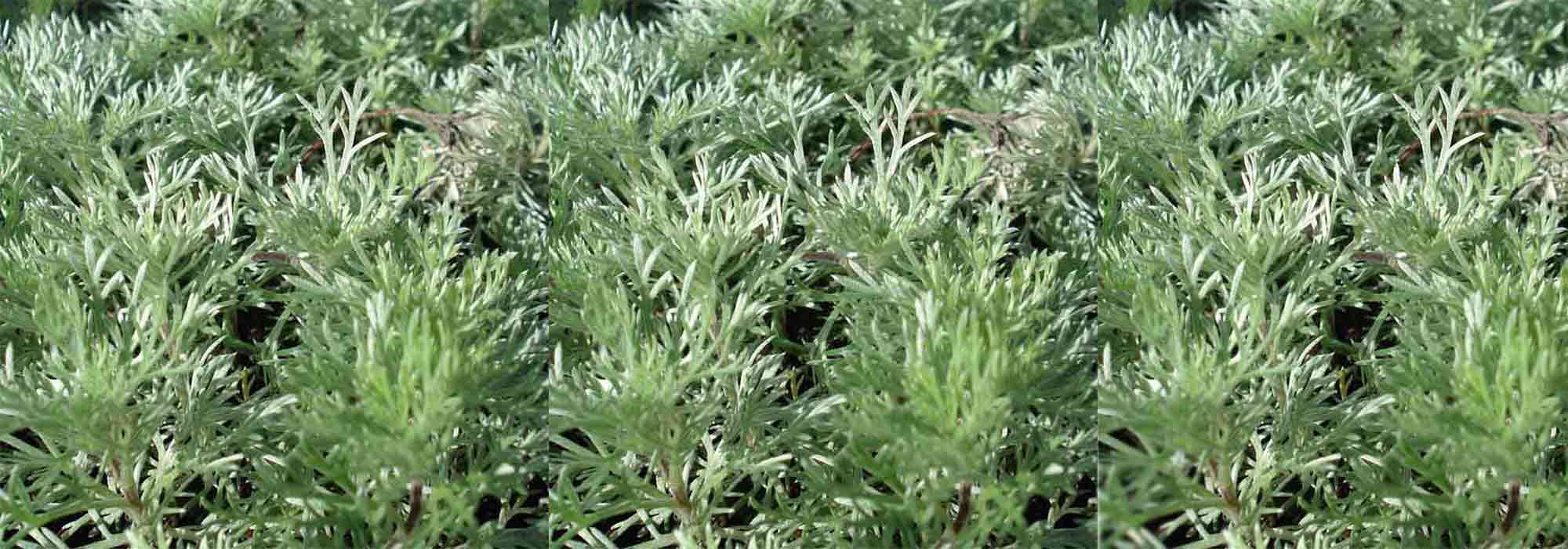
Growing a wormwood in a pot
Everything you need to succeed in growing mugwort in pots
Contents
The wormwoods (named Artemisia and not Artémisia) are perennial or shrubby plants. They are valued for their delicate foliage, which can be more or less dissected, ranging from grey to silver, fragrant and evergreen or not, depending on the variety. With their small yellow flowers that seem rather insignificant, wormwoods are primarily praised for their decorative foliage and ease of maintenance. Common wormwood or Artemisia vulgaris is also cultivated for its medicinal properties, dried and then consumed as a herbal tea or infusion, or even in bouquets. Their compact size is particularly well-suited for pot cultivation. In a city garden, a courtyard, on a balcony or terrace, adopt a potted wormwood that fits perfectly alongside lavender, sage, rosemary, mint, common verbena, and other aromatic and medicinal plants.
Here are our valuable tips for successfully growing wormwood in pots.
Which sagebrush to choose for pot cultivation?
In principle, all wormwoods can be grown in pots, but prefer varieties with small to medium growth. The Artemisia lactiflora, particularly the variety ‘Guizhou’, can reach over 1.5 m, making it difficult to manage in a container, so it is better to grow it in the ground, at the back of a border.
Here are some varieties we recommend for pots:
- Artemisia schmidtiana ‘Nana’: this dwarf wormwood, 10 cm tall, is often grown in rockeries. Its small size and very decorative semi-evergreen silver foliage make it a perfect candidate.
- Wormwood ‘Powis Castle’ which does not exceed 90 cm in height. With its pale grey foliage with silver highlights and its rounded shape, it adds a touch of graphic appeal to a balcony or city garden.
- Artemisia arborescens ‘Little Mice’, with its bright silver-white foliage that does not exceed 40 cm in height.
- Artemisia ludoviciana ‘Valerie Finnis’ is a perennial 40 cm tall that forms a clump of grey-silver foliage, invasive, so growing it in a pot can help contain it.
- Artemisia alba ‘Canescens’, 40 cm tall at ripeness, develops aromatic silver foliage. In a pot, place this lovely ground cover near a passageway or garden seating area to enjoy its fragrance.
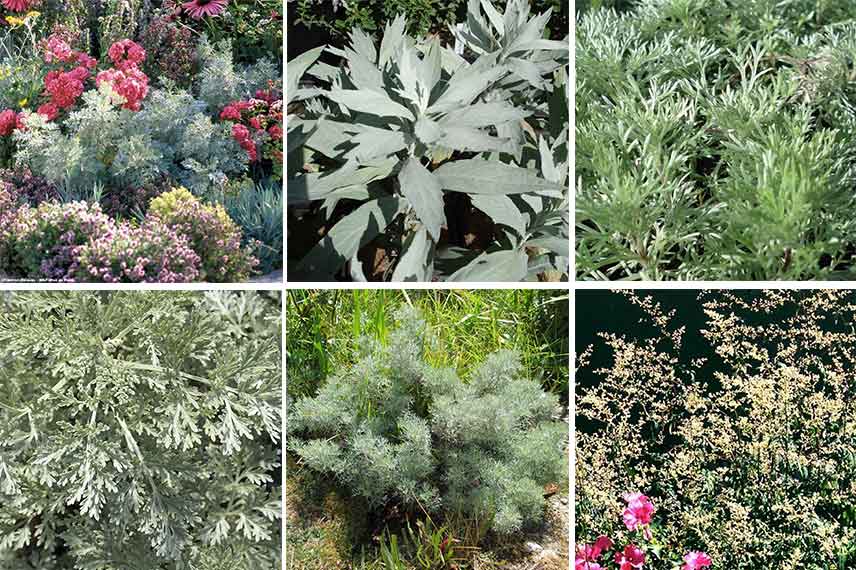
Artemisia ‘Little Mice’, ludoviciana ‘Valerie Finnis’, schmidtiana ‘Nana’, ‘Powis Castle’, alba ‘Canescens’ and lactiflora ‘Guizhou’ (from top to bottom and left to right)
Read also
10 evergreen bushes in potsWhat exposure for a pot-grown wormwood?
Full sun is essential for most wormwoods to thrive, although they tolerate partial shade very well. Light can affect the shades of grey and silver in the foliage, so don’t be surprised if you have the same variety as your neighbour but a different hue, as not all wormwoods are exposed in the same way.
Discover other Artemisia
View all →Available in 2 sizes
Available in 1 sizes
Available in 1 sizes
Available in 1 sizes
Available in 1 sizes
Available in 1 sizes
Available in 1 sizes
Available in 1 sizes
Available in 2 sizes
Available in 1 sizes
What type of pot to use for growing wormwood in a container?
Therefore, plan for a pot (or a planter) between 30 and 50 cm in all dimensions. Initially, adjust the size of the pot to the clump of the plant and change it as the plant develops. Do not choose a pot that is too small or too large.
Ensure it has drainage holes at the bottom to provide more than enough drainage for the survival of the wormwoods.
Opt for a terracotta pot, which is more durable and regulates temperatures. If growing on a balcony or terrace, check the weight limit set by the property management. Plastics or resin may be more suitable to comply with the allowed weight.
Which substrate should be preferred for a pot-grown wormwood?
Low-maintenance, mugwort prefers a poor, dry substrate, especially well-drained. Feel free to add sand (1/3) to a horticultural compost (2/3). Ensure a drainage layer at the bottom of the container: gravel, clay pebbles, or sand. The soil should not retain water but allow it to drain away.
When and how to plant a wormwood in a pot?
Mugwort can be planted in spring or autumn, outside of frost periods and extreme heat. Follow these simple steps for successful planting:
- Check for drainage holes in the bottom of the container.
- Add a layer of drainage at the bottom of the container to improve excess water drainage (from rain or watering).
- Soak the bucket in a basin of water to facilitate the removal of the root ball.
- Fill the pot with a horticultural compost mixed with sand and make a hole.
- Place the moist root ball in the hole.
- Fill in the gaps and firm down.
- Add water.
What about watering and fertiliser?
After planting, provide regular water, about once a week, allowing the soil to dry out between waterings. This will help the root system to develop.
Artemisias in open ground tolerate drought well, but when grown in pots or containers, evaporation is intensified, so plan for some waterings, especially during the summer months.
Artemisias prefer poor soil, so there is no need to add fertiliser, whether in open ground or in containers. However, you can add a bit of decomposed compost in autumn by scratching the surface.
Learn all about watering potted plants with our guide Potted Plants and Watering.
How to care for a pot-grown wormwood?
Wormwoods require little maintenance. Once well established, they will demand little from you. To maintain their dense habit and prevent the stems from becoming too bare too quickly, prune the clumps of wormwoods in spring to thicken the foliage and in autumn to clean them by removing dead stems. As the flowering is of little interest, it is also possible to give them a quick shear to eliminate faded inflorescences.
If the wormwood has taken up too much space, divide it without worry in spring.
Protect the most delicate wormwoods in winter if you live in a cold region, but the majority of wormwoods are hardy and can withstand temperatures down to -15°C. Cover them with a winter fleece, bring the pots into a greenhouse, conservatory, or winter garden, or place them against a wall for shelter.
How to repot a potted wormwood?
As with division, if the mugwort plant becomes larger, repot it every 2 to 3 years into a larger container. Be sure to remove the entire root ball. Using a small fork, untangle the roots around the edges and place the root ball back into the new container filled with substrate.
Discover our tips for successfully growing mugwort: planting, pruning, and care. Here are some ideas to create a white and silver garden and choose from these 7 bushes with silver-grey foliage.
- Subscribe!
- Contents
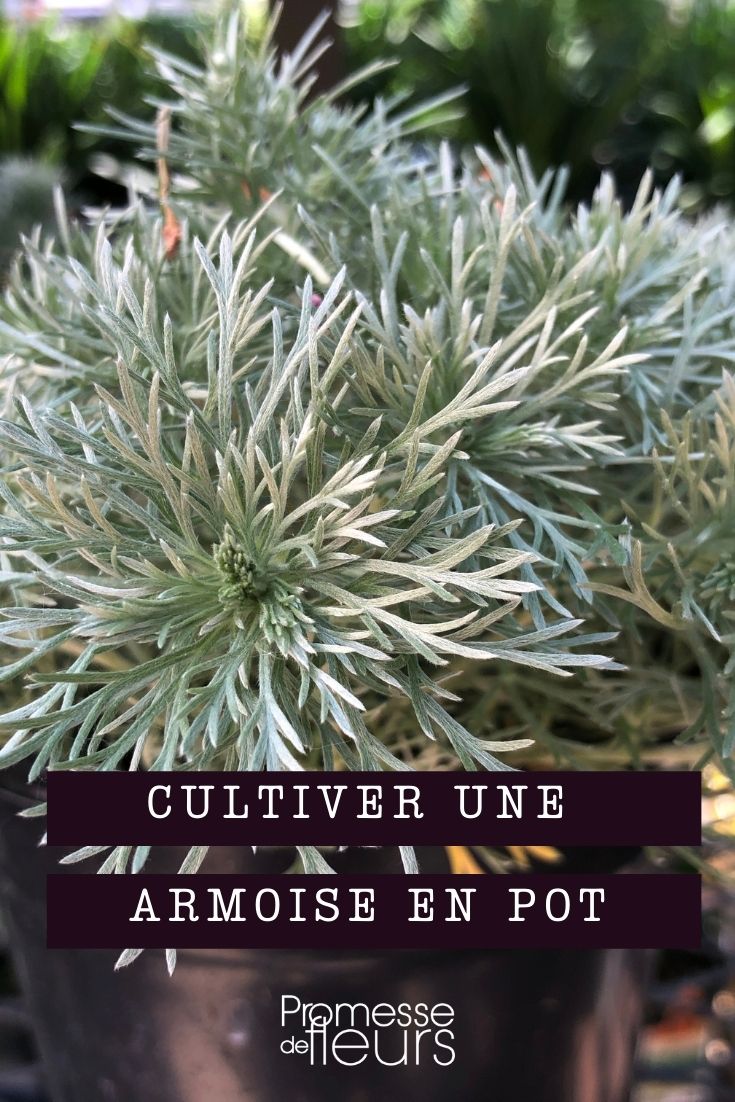































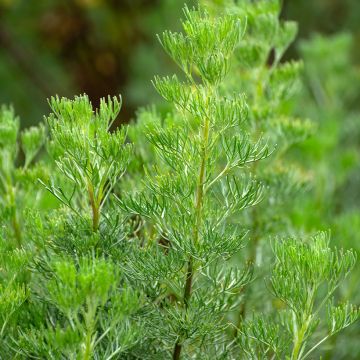
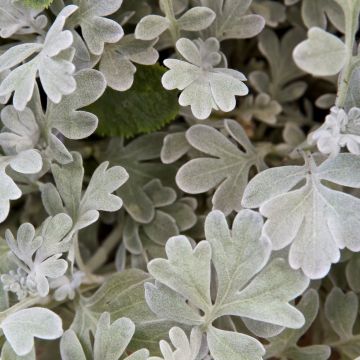
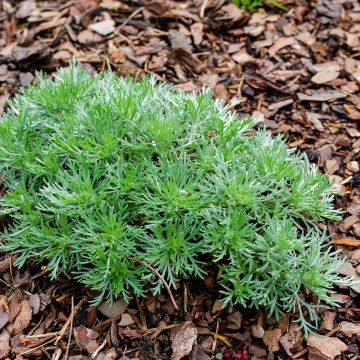
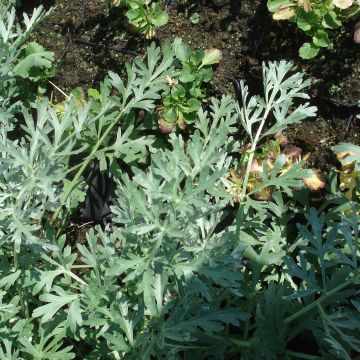
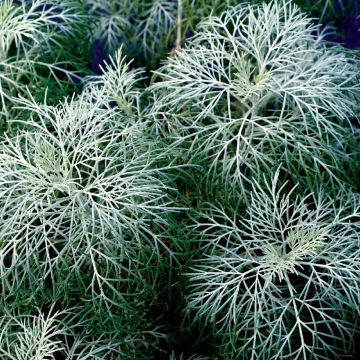
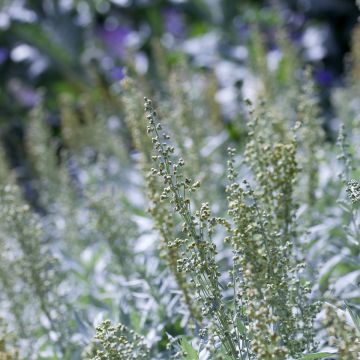
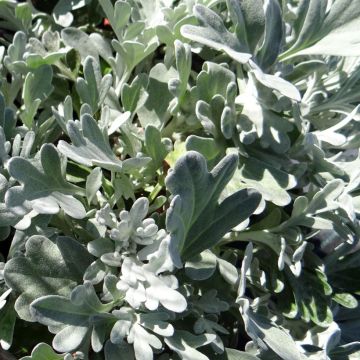
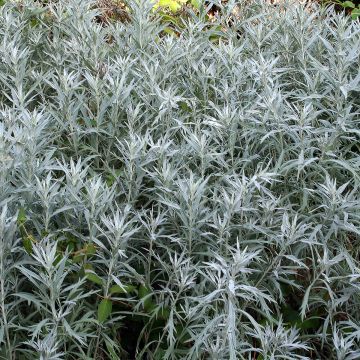
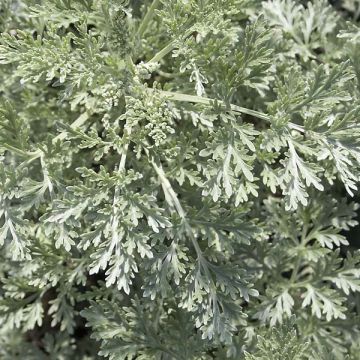
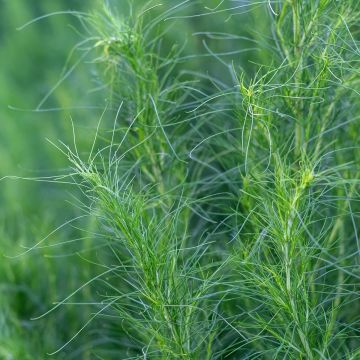
Comments